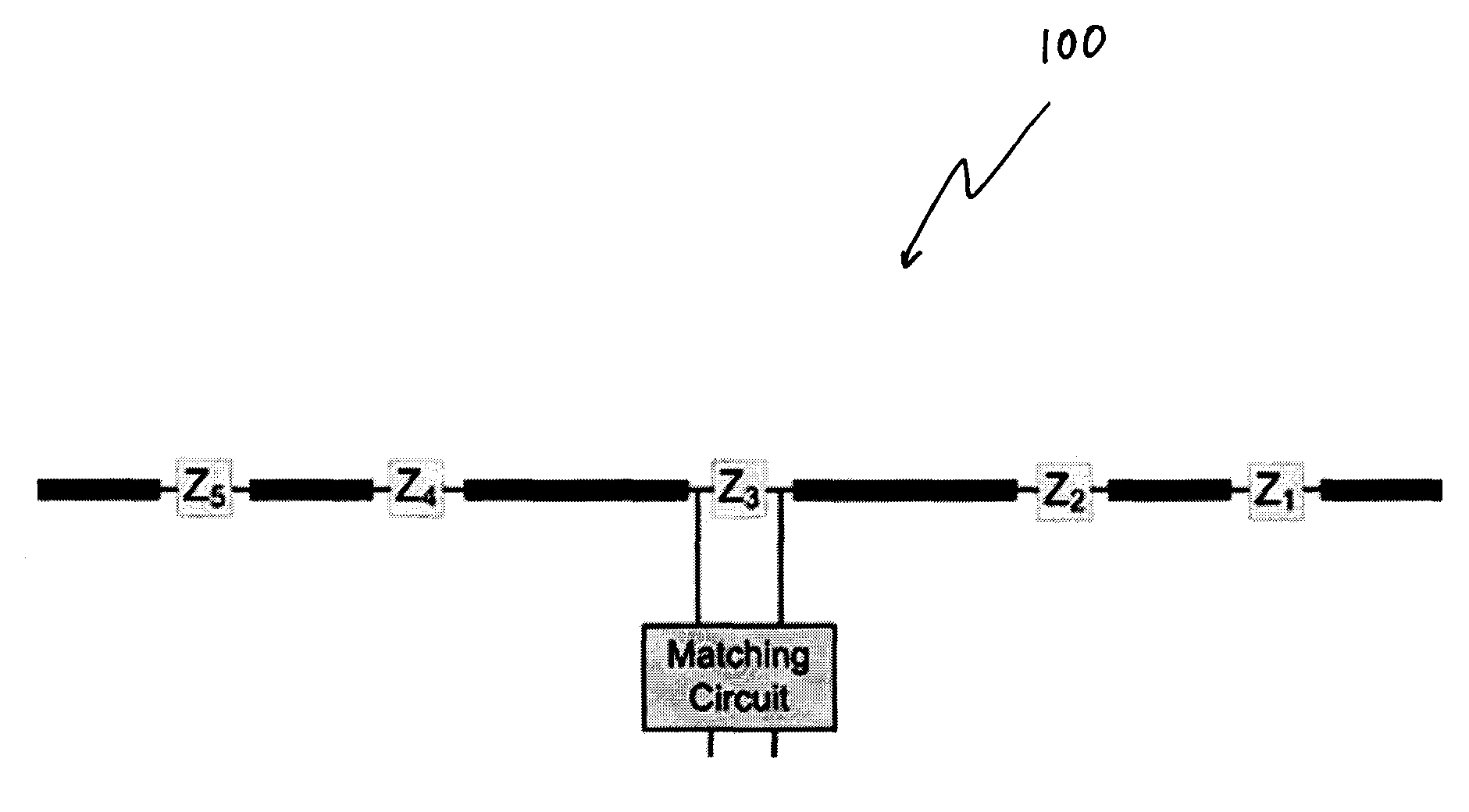Implementation of ultra wide band (UWB) electrically small antennas by means of distributed non foster loading
a technology of electrically small antennas and distributed loading, which is applied in the direction of antennas, antenna details, antenna feed intermediates, etc., can solve the problems of low q factor of antennas, high bandwidth of operation, and unrecognised frequency behavior of loads, and achieves the effect of easy retrofi
- Summary
- Abstract
- Description
- Claims
- Application Information
AI Technical Summary
Benefits of technology
Problems solved by technology
Method used
Image
Examples
Embodiment Construction
)
[0036]Exemplary embodiments of the present invention are directed to antennas and associated methods for designing antennas. To explore these techniques, a brief background on the relevant elements of characteristic mode theory is provided.
[0037]The theory of characteristic modes allows for analysis and synthesis of antenna currents. Characteristic modes are found from the following complex eigenvalue problem:
[Za]Tn=(1+jλn)[Ra]Tn (1)
where [Za]=[Ra]+j [Xa] is the N-port open circuit impedance matrix of the antenna, Tn is the n-th eigencurrent, and λn is the corresponding n-th eigenmode. This problem is obviously concerned with examining the relationship between the real and imaginary parts of the N-port open circuit impedance matrix. Implied in (1) are N characteristic modes, or N eigenmodes. The characteristic modes of an N-port loaded antenna are defined by as:
[Xa]Tn=λn[Ra]Tn. (2)
[0038]The total current is therefore a weighted summation of all these modes:
[0039]I_=-∑n=1NI_n*V_...
PUM
 Login to View More
Login to View More Abstract
Description
Claims
Application Information
 Login to View More
Login to View More - R&D
- Intellectual Property
- Life Sciences
- Materials
- Tech Scout
- Unparalleled Data Quality
- Higher Quality Content
- 60% Fewer Hallucinations
Browse by: Latest US Patents, China's latest patents, Technical Efficacy Thesaurus, Application Domain, Technology Topic, Popular Technical Reports.
© 2025 PatSnap. All rights reserved.Legal|Privacy policy|Modern Slavery Act Transparency Statement|Sitemap|About US| Contact US: help@patsnap.com



